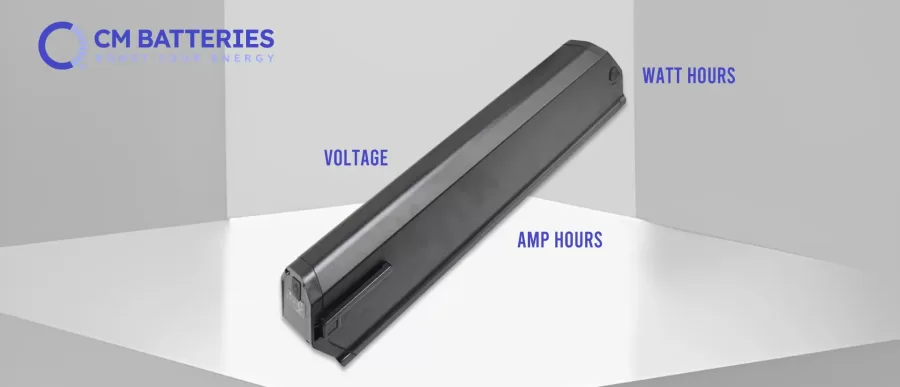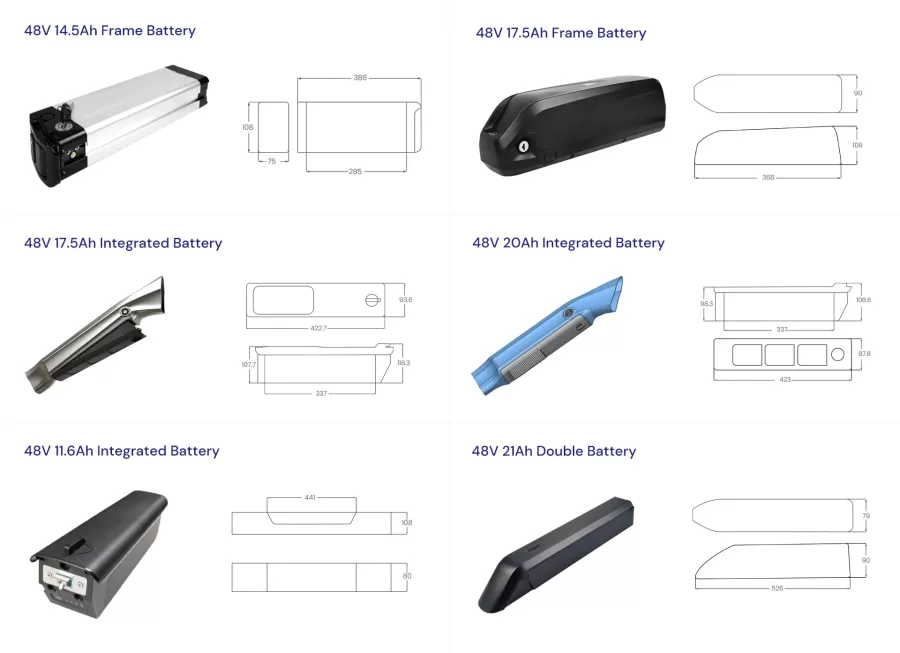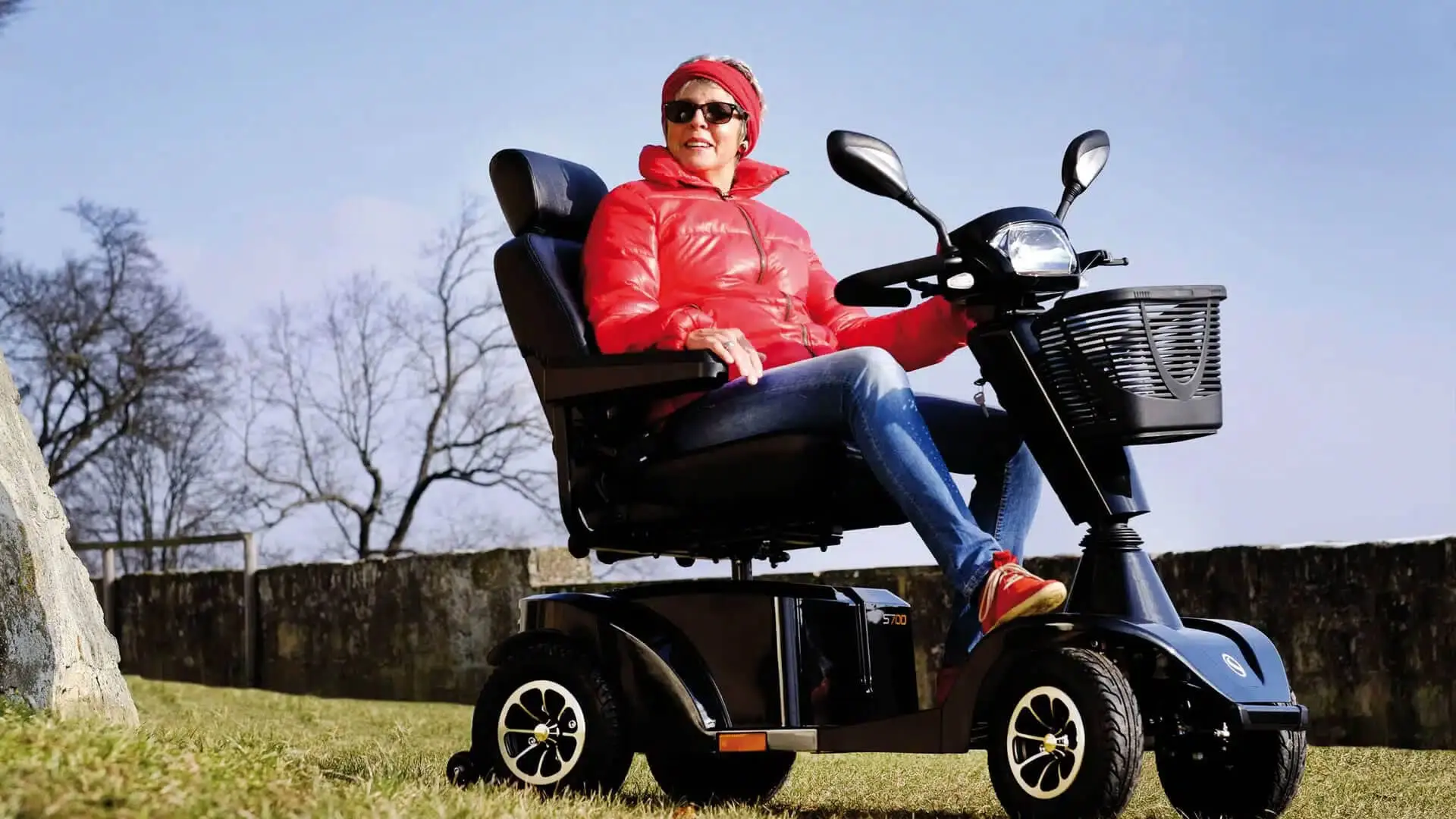As an e-bike battery manufacturer, we understand the e-bike battery is the heart of your e-bike. The electric bike battery capacity determines how long you can ride and the cycling performance. E-bike suppliers provide suitable e-bike battery capacity, which improves the cycling experience of the riders. Besides, it supports the e-bike brands to gain functional authority and increase sales.
Next, we’ll explore the different e-bike battery capacities of a variety of optional batteries, including 24V,36V, 48V, and 52V e-bike batteries. E-bike suppliers can select the optimal battery capacity for their e-bikes after learning about the battery.
Understanding Electric Bike Battery Capacity
The e-bike battery capacity is how much energy it can store. It is measured in Ah, which is an energy unit equal to one watt of power for one hour. The larger battery capacity can support the electric bicycles to work longer.
The battery capacity of an e-bike is determined by three factors:
- The charging and discharging rate of the capacity.
- Temperature. The temperature also affects the capacity.
- Age and history of the battery
Battery capacity is calculated by current multiplied by discharge time:
Battery capacity (Ah) = Current (A) x Discharge Time (h)
For example, a battery works with a 10Amps discharge current for 10 hours, the capacity is 10Ah. When the discharge current is constant, if you want the batteries to work for a longer time, the battery capacity should be larger. To get a high-cost performance battery, your request should be very clear, and the ebike battery provider also has excellent lithium battery professional and market knowledge.
A Larger battery capacity usually means more energy storage, which leads to greater range and power output. However, it is important to strike a balance, as larger-capacity batteries can be heavier and more expensive.

Process of Selecting the Battery Capacity of Electric Bike
As an e-bike supplier, it is key to help customers choose the best battery capacity. Here are some ways to help your customers make an intelligent decision:
- Contact your customers to find out their specific requirements, including riding habits, motor data, controller data, and the expected distance ranges. It supports you in recommending the optimal battery capacity solution.
- Introduce the customer to different battery capacities and their respective advantages and trade-offs. Explain how higher capacity translates into more electric bike battery power and range, but also consider the added weight and cost effects.
- Encourage customers to ride e-bikes with different battery capacities. This hands-on experience will help them understand the difference in performance so they can make a decision.
- Highlight the relationship between capacity, price, and weight to guide their decision-making process.
Help the customers select the suitable battery capacity, and you should care about their specific needs. That is the reason why personalized guidance should be provided.
Battery Capacity of Different E-Bikes
The following sheet shows the battery capacities for the different e-bikes:
| E-Bike Type | Estimated Riding Kilometers | Battery Volts (V) | Battery Amp Hours (Ah) | E-Bike Motor Size (Watts) | Battery Watt Hours (Wh) |
| City e-bike | 25-50 | 36 | 10 | 200W-1500W | 360 |
| Hybrid e-bike | 50-75 | 48 | 15.6 | 250W – 1000W | 750 |
| Mountain e-bike | 75-100 | 48 | 17.4 | 250W – 1200W | 835 |
| Cargo e-bike | 100-125 | 48 | 25 | 1000W-1250W | 1200 |
We also recommend e-bike suppliers choose only lithium-ion batteries. Because of its high energy density, lightweight design, and long service life, it is the most suitable battery for e-bikes.
Battery Knowledge for Different E-Bike Battery Capacities
Let’s dive into the specifics of different battery capacities:
36V batteries are a common choice for entry-level and mid-range e-bikes. It balances range and power output and is suitable for daily commuting and recreational riding. Typically, 36V batteries range in capacity from 10Ah to 15Ah, providing a suitable range for most e-bike users.

48V battery capacity is a popular choice for those seeking the best e-bike battery for long distances and more power. These batteries offer a higher level of performance compared to 36V batteries. 48V batteries are typically available in capacities between 10ah and 20ah, offering a significant boost in power output and range. E-bikes with 48V batteries are suitable for riders with longer commuting distances or those who want higher speeds.

52V batteries are designed for the enthusiast and rider. Provides more power, torque, and durability. Perfect for off-road adventures and demanding terrain. With a capacity ranging from 10Ah to 20Ah, a 52V battery provides excellent speed, extended range, and enhanced torque.

CMB can also customize high-power and long-range e-bike batteries, such as 72V e-bike batteries. The 72V battery is very powerful, but it is the least common type of e-bike battery. Because it’s very bulky and expensive.
How To Test Ebike Battery Capacity?
Method 1: Use the aging test machine. You can set the charge current and discharge current in the aging test station. The machine records the curve, the capacity test process, and the capacity data.
Method 2: Connect a known-well load resistor or specialized battery discharger to the fully charged battery. Discharge the battery completely or until the voltage drops to a predetermined level.
Measure the discharge time and current. Calculate the capacity using the formula: Capacity = Discharge Time x Discharge Current.
Please note that the exact testing method may vary depending on the battery chemistry and battery pack manufacturer. Refer to the battery pack manufacturer’s guidelines or consult the CMB team if you need assistance with how to test your e-bike battery capacity.
Choosing the right e-bike battery capacity is important to optimize your customer’s riding experience. We recommend considering usage requirements and understanding the voltage and performance differences between 36V, 48V, and 52V ebike battery options. You can also contact us for customized ebike batteries with higher power and the longest-lasting ebike battery.
You’ll help increase their satisfaction and allow them to enjoy their electric bikes adventures when you are accurate in knowing your customers’ battery specifications.











